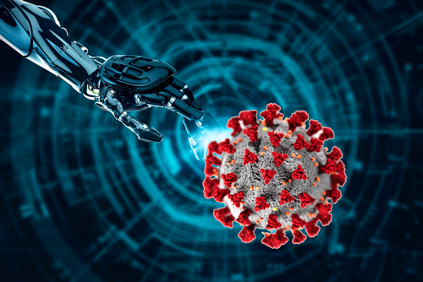Over the last few years, there has been a burst of excitement for AI-based applications through businesses, governments, and the academic community. For example, natural language processing (NLP) and image analysis where input values are high-dimensional and high-variance are areas that deep learning techniques are highly useful. AI has shifted from algorithms that rely on programmed rules and logic to machine learning where algorithms contain a few rules and ingest training data to learn and training themselves. "The current generations of AI is what we call machine learning (ML) — in the sense that we’re not just programming computers, but we’re training and teaching them with data,” said Michael Chui, Mckinsey global institute partner in a podcast speech.
AI feeds heavily on data. Andrew Ng, former AI head of Google and Baidu, states data is the rocket fuel needed to power the ML rocket ship. Andrew also mentions companies and organizations that are taking AI seriously are working hard to acquire the right and useful data they need. Supervised learning needs more data than other model types in machine learning area. In supervised learning, algorithms learn from labeled data. Data needs to be labeled and categorized for training models. When the number of parameters and the complexity of problems increases, the need of data volumes grows exponentially.

Data limitations: the new bottlenecks in machine learning
An Alegion survey reported that nearly 8 out of 10 enterprises currently engaged in AI and ML projects have stalled. The same study also revealed that 81% of the respondents admit the process of training AI with data is more difficult than they expected. According to a 2019 report by O’Reilly, the issue of data ranks the second-highest on obstacles in AI adoption. Gartner predicted that 85% of AI projects will deliver erroneous outcomes due to bias in data, algorithms, the teams management, etc. The data limitations in machine learning include but not limited to:
- Data collection. Issues like inaccurate data, insufficient representatives, biased views, loopholes, and ambiguity in data affect ML’s decisions and precision. Let along the hard access to large volumes of high quality datasets for model development, especially during Covid-19 when data has not been available for some demanding AI enterprises.
- Data quality. Low-quality labeled data can actually backfire twice: first during training model building and again when the model consumes the labeled data to make future decisions. For example, popular face datasets, such as the AT&T Database of Faces, contain primarily light-skinned male images, which leaves systems struggling to recognize dark-skinned and female faces. To create, validate, and maintain production for high-performing machine learning models, ML engineers need to use trusted, reliable data.
- Data labeling. Since most machine learning algorithms use supervised approaches, data is useless for ML applications which rely on computer visions and supervised learning approaches, unless it is labelled properly. The new bottleneck in machine learning nowadays is not only about the collection of qualified data anymore, but also about the speed and accuracy of the labeling process.
Solution
ML needs vast amounts of labeled high-quality datasets for model training to arrive at accurate predictions. Labeling of training data is progressively one of the primary concerns in the implementation of machine learning algorithms. AI companies are eager to acquire high quality labeled datasets to match their AI model requirements. Researches are showing ByteBridge.io, a data collection and labeling platform that allows users to train state-of-the-art machine learning models without manual marking of any training data themselves. ByteBridge.io's dataset includes diverse and rich data such as texts, images, audios and videos with full coverage of languages, races and regions across the globe. Its integrated data platform eliminates the intermediate processes such as labor recruitment for human in the loop, test, verification and so forth.
Automated data training platform
ByteBridge.io takes full advantage of the platform's consensus mechanism algorithm which greatly improves the data labeling efficiency and gets a large amount of accurate data labeled in a short time. The Data Verification Engine, equipped with advanced AI algorithms and the highly trained project management dashboard has automated the annotation process which fulfills the needs and standards of AI companies in a flexible and effective way.
“We believe data collection and labeling is a crucial factor in establishing successful machine learning models. We are committed to building the most effective data training platform and helping companies take full advantage of AI's capabilities,” said Brian Cheong, CEO of ByteBridge.io. “We have streamlined data collection and labeling process to relieve machine learning engineers from data preparation. The vision behind ByteBridge.io is to enable engineers to focus on their ML projects and get the value out of data.”
Compared with competitors, ByteBridge.io has customized for its automation data labeling system thanks to the natural language processing (NLP) enabled software. Its Easy-to-integrate API enables continuous feeding of high quality data into a new application system.
Both the quality and quantity of data matters for the success of AI outcome. Designed to power AI and ML industry, ByteBridge.io promises to usher in a new era for data labeling and collection, and accelerates the advent of the smart AI future .














